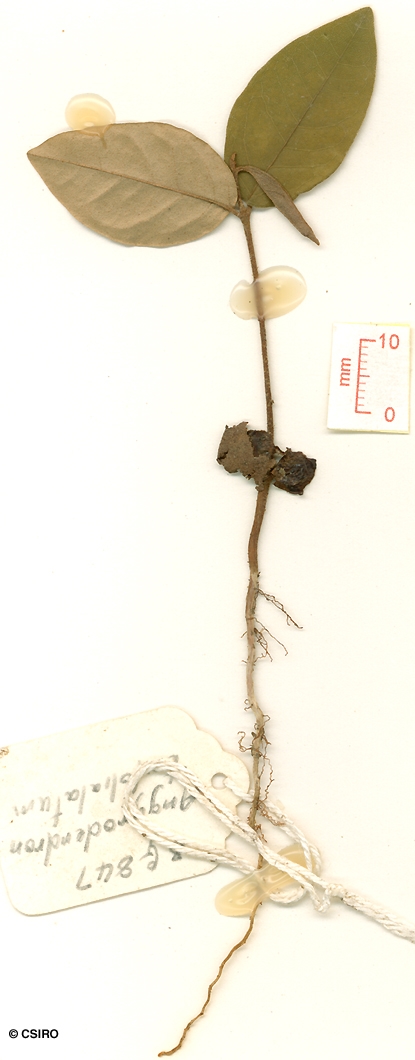Australian Tropical Rainforest Plants - Online edition
Argyrodendron trifoliolatum F.Muell.






Mueller, F.J.H. von (1858) Fragmenta Phytographiae Australiae 1: 2. Type: Ad flumina Brisbane et Pine River, W. Hill. F. Mueller.
Brown Booyong; Brown Crowsfoot; Brown Crowsfoot Elm; Brown Oak; Crowsfoot Elm; Hickory; Highroot; Ironwood; Oak, Brown; Red Booyong; White Booyong; Stonewood; Silky Elm; Stavewood; Silver Tree; Oak, Brown Tulip; Black Stavewood; Brown Tulip Oak; Booyong
Outer blaze with pink, fibrous and white or cream, granular stripes. Blaze layering rather fine.
Outer surface of the flower buds clothed in dark brown, stellate scales. Flowers about 13-15 mm diam. Inner surface of the perianth tube tuberculate, but mainly free of stellate hairs and scales. Anthers about 15 per flower.
Cotyledons fleshy, about 5-6 x 5-6 mm, venation not visible. First pair of leaves lanceolate, lower surface brown from scales. At the tenth leaf stage: leaf blade glabrous and midrib raised on the upper surface, lower surface brown from scales; stipules large, linear-lanceolate, clothed in scales. Seed germination time 16 to 314 days.
Occurs in NEQ, CEQ and southwards as far as north eastern New South Wales. (The form referring to this species name in this publication may be endemic to NEQ). Altitudinal range from 50-800 m. Grows in well developed rain forest on a variety of sites but probably reaches its best development on upland sites on deep red soils derived from basalt.
Before the development of fibreglass and carbon fibre, the timber of this species was sometimes used in the manufacture of fishing rods. Swain (1928).
Produces a useful general purpose timber suitable for house construction in places not exposed to the weather.
Wood specific gravity 0.92 Cause et al. (1989).





